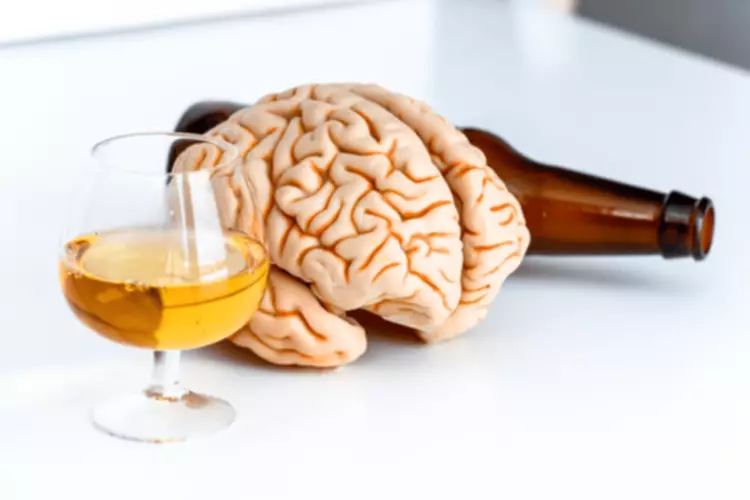
Fluid resuscitation, carbohydrate administration, and thiamine supplementation are the mainstays of treatment in alcoholic ketoacidosis (AKA). However, if an individual presents with symptoms of ketoacidosis but is not found to be in a state of ketoacidosis, healthcare providers will investigate alternative conditions like alcohol ketosis dangerous alcohol poisoning. Alcoholic ketoacidosis is also commonly accompanied by the symptoms of dehydration, which include feeling thirsty, weak, dizzy, and lightheaded. If you were to ignore your symptoms, though, you could end up with a life-threatening condition like a heart attack or seizure, or a differential diagnosis.
- However, if an individual presents with symptoms of ketoacidosis but is not found to be in a state of ketoacidosis, healthcare providers will investigate alternative conditions like alcohol poisoning.
- Exclude other causes of autonomic hyperactivity and altered mental status.
- Prolonged vomiting leads to dehydration, which decreases renal perfusion, thereby limiting urinary excretion of ketoacids.
- The decreased insulin-to-glucagon ratio that occurs in starvation indirectly reduces the inhibition on CAT activity, thereby allowing more free fatty acids to undergo oxidation and ketone body formation.
- Limiting the amount of alcohol you drink will help prevent this condition.
Fluid, Electrolyte and Acid-Base Disorders: Clinical Evaluation and Management

The role of lactate, as well as the potential development of alkalosis or acid-base disturbances, is significant in understanding this condition. Several mechanisms are responsible for dehydration, including protracted vomiting, decreased fluid intake, and inhibition of antidiuretic hormone secretion by ethanol. Volume depletion is a strong stimulus to the sympathetic nervous system and is responsible for elevated cortisol and growth hormone levels. During starvation, there is a decrease in insulin secretion and an increase in the production of counter-regulatory hormones such as glucagon, catecholamines, cortisol, and growth hormone. Hormone-sensitive lipase is normally inhibited by insulin, and, when insulin levels fall, lipolysis is up-regulated, causing release of free fatty acids from peripheral adipose tissue. The prognosis for alcoholic ketoacidosis is good as long as it’s treated early.
What Are the Symptoms of Alcoholic Ketoacidosis?

(2) This can rapidly lead to AKA, which may manifest even after a single binge-drinking episode, especially if you abstain from eating for an extended period. Elevated cortisol levels can increase fatty acid mobilization and ketogenesis. Growth hormone can enhance precursor fatty acid release and ketogenesis during insulin deficiency. Catecholamines, particularly epinephrine, increase fatty acid release and enhance the rate of hepatic ketogenesis. It most often occurs in a malnourished person who drinks large amounts of alcohol every day.

Clinical Resources Lead
You may get vitamin supplements to treat malnutrition caused by excessive alcohol use. Patients with AKA typically do not require transfer, unless coexisting conditions require a higher level of care. Join 40,000+ People Who Receive Our Newsletter Get valuable resources on addiction, recovery, wellness, and our treatments delivered directly to your inbox. The prevalence of AKA in a given community correlates with the incidence and distribution of alcohol abuse in that community.
Alcoholic ketoacidosis: a cause of sudden death of chronic alcoholics
Specifically look for nystagmus, confusion, ataxia, confabulation, and restriction of extraocular movements. Strongly consider providing thiamine supplementation to patients with alcohol dependence even without signs of thiamine deficiency. Evaluate the patient for signs of alcohol withdrawal syndrome, which may include tremors, agitation, diaphoresis, tachycardia, hypertension, seizures, or delirium. Exclude other causes of autonomic hyperactivity and altered mental status. If the diagnosis of alcohol withdrawal syndrome is established, consider the judicious use of benzodiazepines, which should be titrated to clinical response.
Treatment Process
- The diagnosis of AKA requires a high index of suspicion based on clinical presentation, with an AGMA with ketosis being a hallmark feature.
- We consider that the true effect is likely to be close to the estimate of the effect, but there is a possibility that it is substantially different.
- A requirement for any medications other than D5 NS and thiamine are uncommon.

